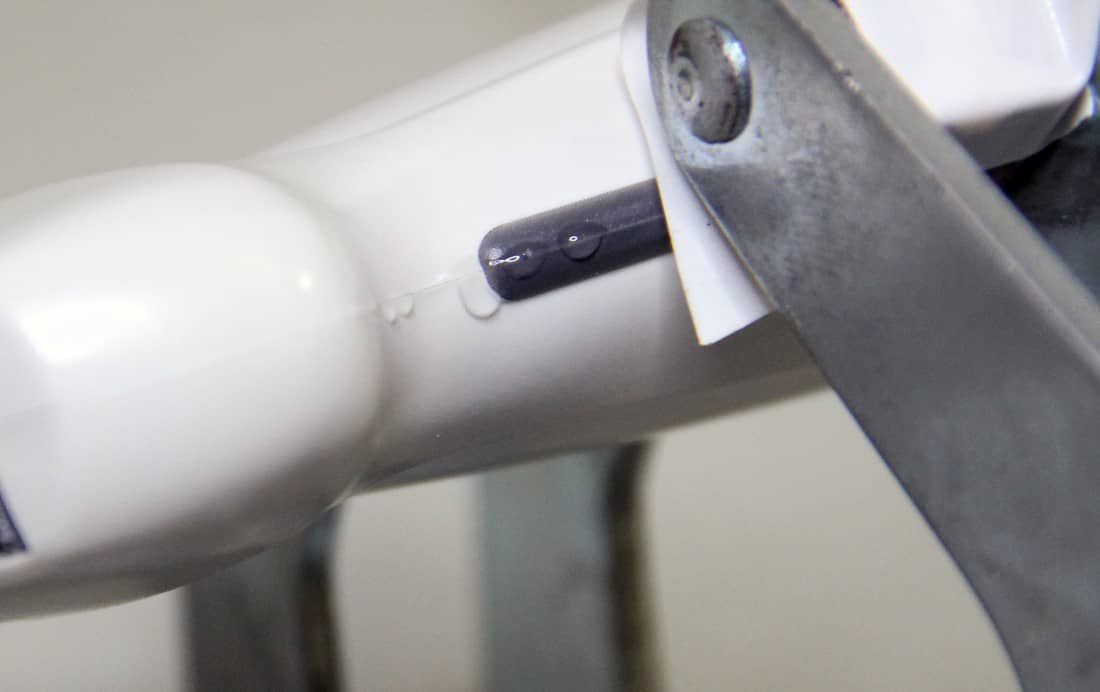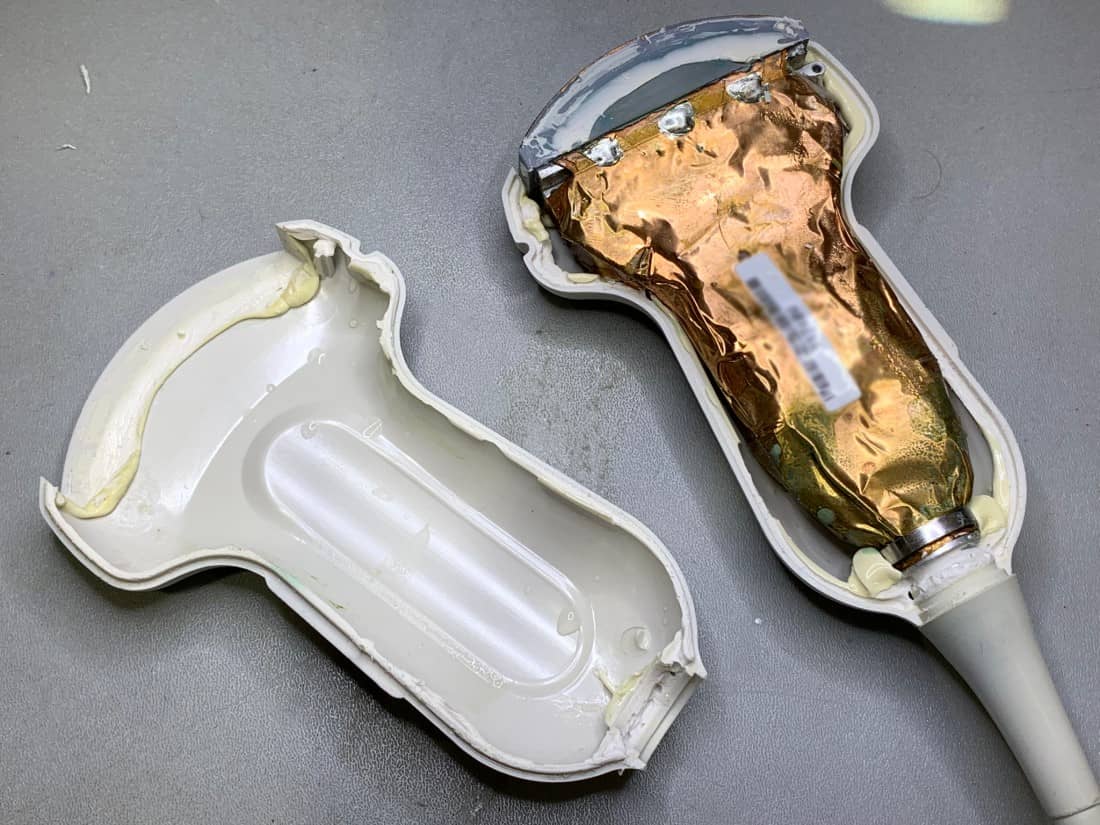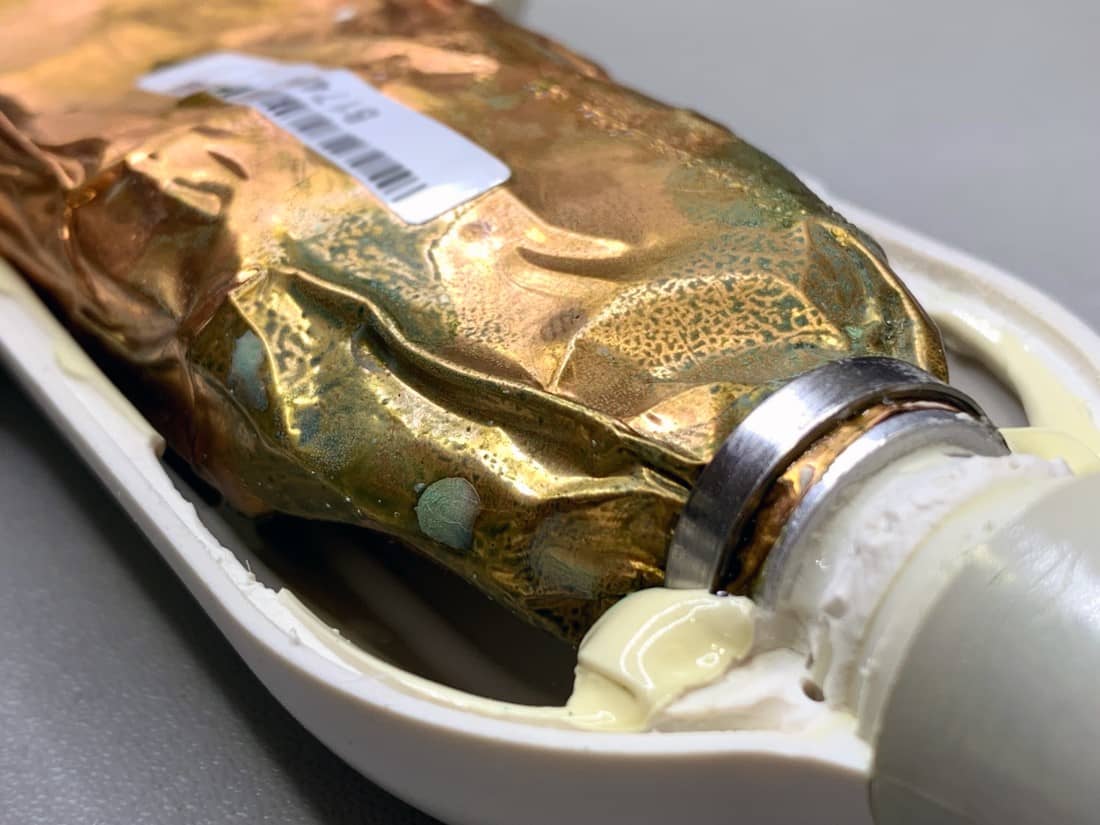
Have you ever seen anything like this before?
It’s never a good sign when you see water leaking out of a customers probe before you even have a chance to open it up!
Unfortunately, this C5-1 has been exposed to fluid which has penetrated into the transducer body. While we can only speculate, it is likely that the probe was submerged in water – presumably during a cleaning or disinfection process. It is so important to read the manufacturer’s guidelines for cleaning and disinfection to ensure that you are not putting your equipment at risk. The guidelines will explain which solutions are compatible with your probes, and for how long to expose them to. You can read more about this here.
Though most transducers are designed to be water-tight at the head, over time, and after exposure to drops or other trauma, the seals can degrade around your strain reliefs, case seams, and lenses. Time and time again ProbeLogic sees customer probes that have been corroded beyond the point of repair simply because they were not brought in sooner.
Have a look at what we found once we separated the probe’s casing!

Shocking corrosion . The green ‘mould-like’ spore is actually copper-oxide; a result of the copper shielding inside the probe corroding after being exposed to water. Fluid ingress can wreak havoc on the electronic components inside your probe and lead to problems with your imaging quality – even obscuring important details in your scans.
Fluid inside your transducer can also be an electrical hazard to both you and your patients because your probe is the direct contact between the skin and the electrical current that runs through your ultrasound machine. Probes are designed to be electrically insulated to protect against the risks of electric shock. However, when this insulation, or housing, is compromised, the leakage current (which is not intended to ever reach a patient), can extend to them through contact with exposed metal.
Without proper grounding, leakage currents could reach values of 1,000 μA (milliamps) before the problem is perceived. A patient can be injured by a leakage current of as little as 10 to 180 μA.

While this corrosion is shocking to look at, it is important to remember that all of this damage was completely invisible from the outside. As the damage is limited to the lower end of the probe body near the strain relief, we can assume that this is where the fluid penetrated. It is likely that there was a slight separation between the case seams, or missing sealant between the case and the strain relief.
Luckily for the customer and their patients, we only found water ingress inside this probe but it could have been a lot worse. If water can build up probe head, so too can other contaminants. Once inside your transducer, foreign matter is incredibly difficult to remove without dismantling the entire probe. Bodily fluids or bacteria can build up and be transferred from patient to patient, cross-contaminating a number of surfaces they come into contact with. You can read here about an extreme case of fluid ingress resulting in the build up of contaminants inside a transducer with slight seam separation.
Protect your patients against all of these risks by scheduling your probes in for a consult today!

